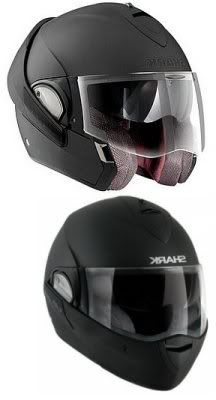Remember the days when you could look under the hood of a car and see the ground beneath the engine? Now days, the real estate under the hood is so crowded, you can't even see the wheel wells. Motorcycles have evolved in a similar fashion. My first bike was a 1974 Indian knock off from Taiwan. It was a simple two stroke motor with a carburetor, points and condenser, an intake and exhaust pipe, a kick start, and drum brakes. I could completely take that bike apart and reassemble it in a couple of hours. I had several other rides, both street and dirt over the years since that first bike.
Fast forward to 2006 and my first Harley. It was a new Dyna Wide Glide that I had customized into a one-of-a-kind expression of what I wanted to ride and who I wanted to be when I was on it. It was a cool looking bike and people said I looked cool riding it. It had an exhaust note that could force an involuntary bowel movement from unsuspecting near bystanders when I twisted the throttle. After three years and almost 40,000 miles on the Wide Glide, the desire for cool had been overtaken by the desire for comfort. I'm no poser. I ride. OK, ignore that photo on the right of me sitting on the Wide Glide and re-read that statement. My point is I'm not one of those guys who finally gets permission from his wife to buy a Harley, has the dealer ride it home for him, parks it in the garage, and puts a few hundred miles a year on it.
Fast forward again to 2010 and consider my new Harley. It's a beautiful FLTRX Road Glide Custom bathed in what Harley calls Scarlett red paint, that I named Hester. Compared to my old bikes, this thing had everything when I rode it off the dealer lot; dual ABS disk brakes, cruise control, electronic fuel injection, and adjustable air suspension. Still, I added more. I knew when I purchased Hester that she would be my ticket to comfort on long road trips. but the stock seat and handlebars were woefully uncomfortable. I had the seat modified with memory foam for butt relief on extended periods of riding. I installed handlebars that reach back to the rider position better so I don't have to stretch and lean over to ride the damn thing. The exhaust I installed eliminates the the catalytic converter, which drops the temperature significantly while providing a hearty warning bark when I twist the throttle to alert clueless cagers of my proximity to them. In a stroke if pure vanity, I painted the inner fairing and dash area to match the bright red finish. Those modifications are nice, but my favorite additions are the electronic gadgets.
I love Hester's Harmon Kardon stereo. Many old school riders will tell you that the sound of the wind and exhaust are sweet enough and that music just gets in the way. Well, many old school bikers are just plain wrong. It's easy to knock something that didn't exist when you rode actively. Although I never even considered the need for a stereo on my Wide Glide, although I often rode with my iPod and ear buds. The stock stereo on a modern Harley comes with an audio CD/MP3 CD player and AM/FM radio. Fortunately, it also comes with an external audio input jack because I never listen to CDs anymore and terrestrial broadcast radio sucks. I have a splitter that accepts audio inputs from my iPod and my Sirius satellite radio and plugs into the external audio jack. I can ride fifteen hours straight and not hear a single commercial or repeat tune. On my last long trip, the collective works of Rush, Motőrhead, Frank Zappa, and Cheap Trick from my iPod provided an integral part of my sanity as the miles and hours passed. Other times, classic hard rock from Sirius' Boneyard channel and political talk from Sirius' Patriot channel filled the air between my speakers and my helmet. While Hester's dash was being painted, I installed a HogTunes power amplifier and J&M 7-1/4" speakers. After all, all those tunes and cool satellite channels are worthless if you can't hear them at 80+ miles per hour, so better speakers and an amp were a must.

All of these devices have one thing in common. They need power. Harley touring bikes come stock with one twelve volt cigarette lighter. With an iPod, cell phone, a satellite radio receiver, GPS receiver, radar detector, and a video camera, I needed more power. Hell, I probably need another battery. I ran dedicated fused power wires from the battery to the right glove box and in it installed a dual 12 volt power outlet and dual USB power ports. Tim Taylor would be proud of my Binford-esque efforts in search of more power.
I love Hester's Harmon Kardon stereo. Many old school riders will tell you that the sound of the wind and exhaust are sweet enough and that music just gets in the way. Well, many old school bikers are just plain wrong. It's easy to knock something that didn't exist when you rode actively. Although I never even considered the need for a stereo on my Wide Glide, although I often rode with my iPod and ear buds. The stock stereo on a modern Harley comes with an audio CD/MP3 CD player and AM/FM radio. Fortunately, it also comes with an external audio input jack because I never listen to CDs anymore and terrestrial broadcast radio sucks. I have a splitter that accepts audio inputs from my iPod and my Sirius satellite radio and plugs into the external audio jack. I can ride fifteen hours straight and not hear a single commercial or repeat tune. On my last long trip, the collective works of Rush, Motőrhead, Frank Zappa, and Cheap Trick from my iPod provided an integral part of my sanity as the miles and hours passed. Other times, classic hard rock from Sirius' Boneyard channel and political talk from Sirius' Patriot channel filled the air between my speakers and my helmet. While Hester's dash was being painted, I installed a HogTunes power amplifier and J&M 7-1/4" speakers. After all, all those tunes and cool satellite channels are worthless if you can't hear them at 80+ miles per hour, so better speakers and an amp were a must.

All of these devices have one thing in common. They need power. Harley touring bikes come stock with one twelve volt cigarette lighter. With an iPod, cell phone, a satellite radio receiver, GPS receiver, radar detector, and a video camera, I needed more power. Hell, I probably need another battery. I ran dedicated fused power wires from the battery to the right glove box and in it installed a dual 12 volt power outlet and dual USB power ports. Tim Taylor would be proud of my Binford-esque efforts in search of more power.
The bike isn't the only recipient of enhanced technology modern riders face. Helmets these days rival NASA in function, composition, and complexity. My Shark Evoline 2 is a modular helmet that adjusts from a full coverage helmet to an open-face 3/4 configuration. It has an internal retractable visor and is equipped with internal stereo speakers and a microphone. The speakers and microphone connect via bluetooth wireless to a host of other devices including a cell phone, GPS receiver for audible directions, and other riders' wireless helmets on the bike and as far away as 1/4 mile. I can also connect via bluetooth wireless or wired to my iPod or satellite receiver for inside helmet sound if for some reason I deem the rest of the world not worthy of hearing my music. Beyond all its functionality, I think the Shark is looks cool and if nothing else, it would come in handy if decide to dress up as the Black Power Ranger for Halloween.
Riding long trips is rewarding, but the ability to capture the ride and bore the hell out of everyone you know with the footage is especially cool. I have a very compact digital video camera that mounts to the handlebars and stores its footage on a 32GB SD card. I can store an entire day's riding on the card and offload it onto a terabyte drive I carry on the bike, allowing me to document up to month's worth of riding.
The problem with the handlebar mounted video camera is that it only looks forward. This view allows for some nice shots, such as my Death Valley crossing or twisty mountain passages, but doesn't allow for peripheral views. The answer is a helmet cam and I'm in the market for one. I want to be able to capture the side-to-side wildlife and terrain and mix it into the handlebar footage. I've watched hours of good helmet cam footage and want to record my own. I will enjoy learning my options in the coming months.
Riding long trips is rewarding, but the ability to capture the ride and bore the hell out of everyone you know with the footage is especially cool. I have a very compact digital video camera that mounts to the handlebars and stores its footage on a 32GB SD card. I can store an entire day's riding on the card and offload it onto a terabyte drive I carry on the bike, allowing me to document up to month's worth of riding.
The problem with the handlebar mounted video camera is that it only looks forward. This view allows for some nice shots, such as my Death Valley crossing or twisty mountain passages, but doesn't allow for peripheral views. The answer is a helmet cam and I'm in the market for one. I want to be able to capture the side-to-side wildlife and terrain and mix it into the handlebar footage. I've watched hours of good helmet cam footage and want to record my own. I will enjoy learning my options in the coming months.
Is all this technology too much? I see it this way. Cell phones, MP3 players, radar detectors, etc. are a fact of life on the roads today. We hear all too often about cage accidents caused by clueless drivers texting, talking, and otherwise fiddling with the gadgets when their eyes should have been on the road and their hands on the wheel. It's no different on a motorcycle, especially when you ride twelve to fifteen hours a day. If I can manage these devices wirelessly while keeping at least one hand on the bars, I'll be able to maintain my focus on the road conditions and keep an eye out for the clueless cagers who are trying to text, talk, drive, change the CD, and drink their coffee. That not only keeps me sane and entertained. I believe it keeps me safer.




